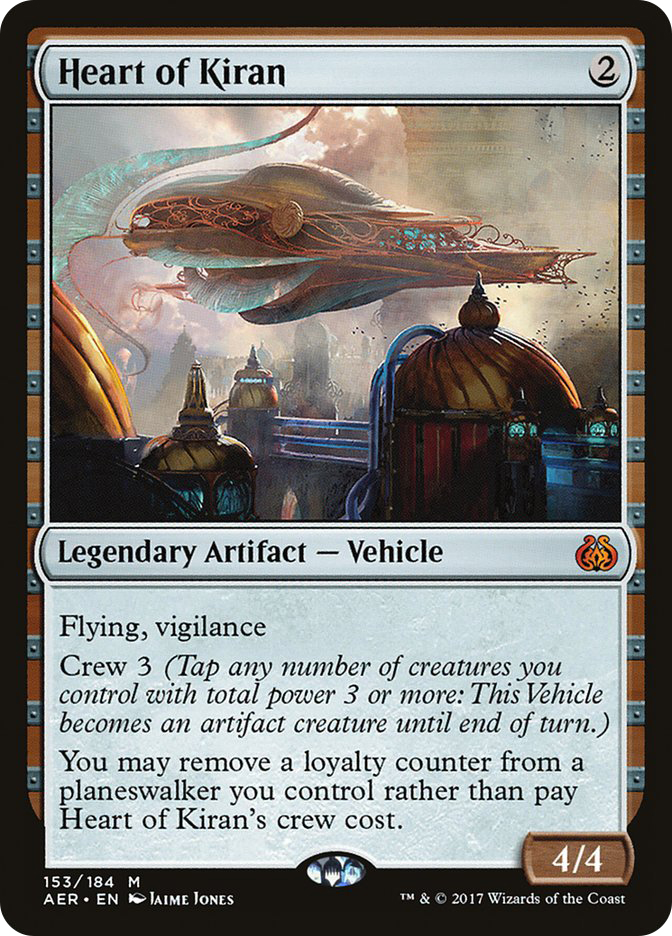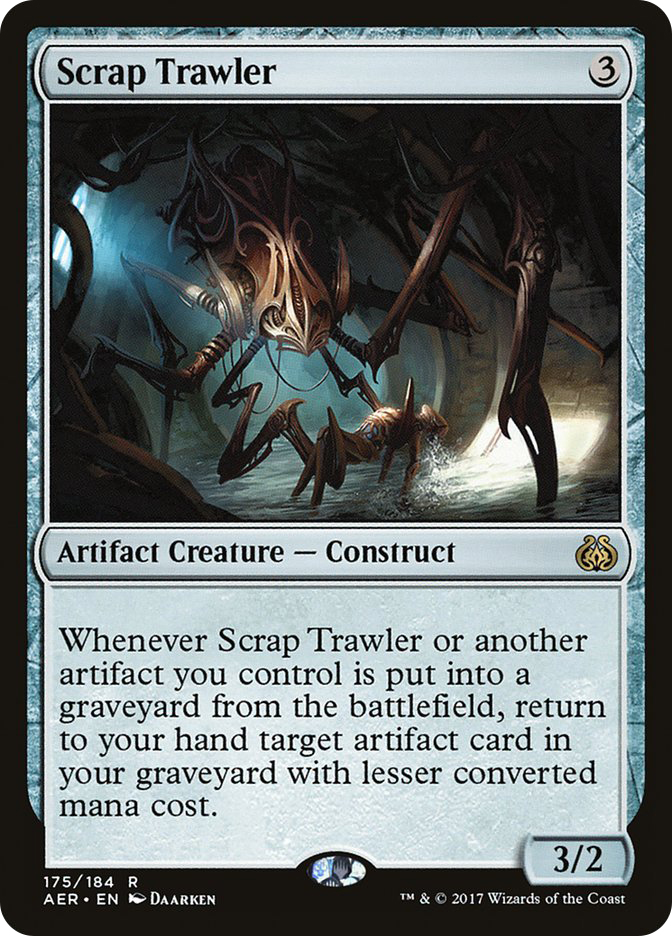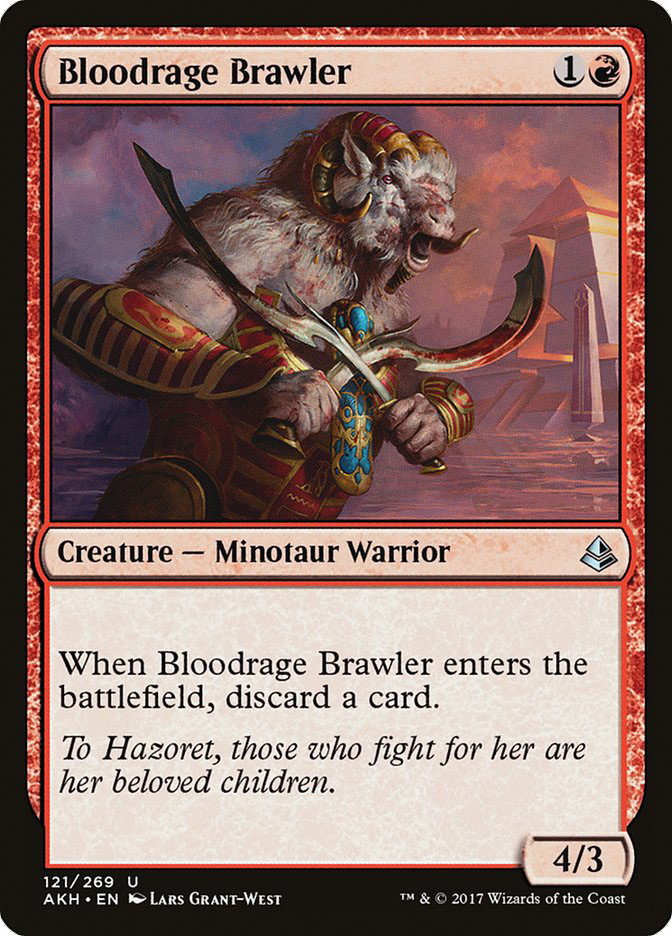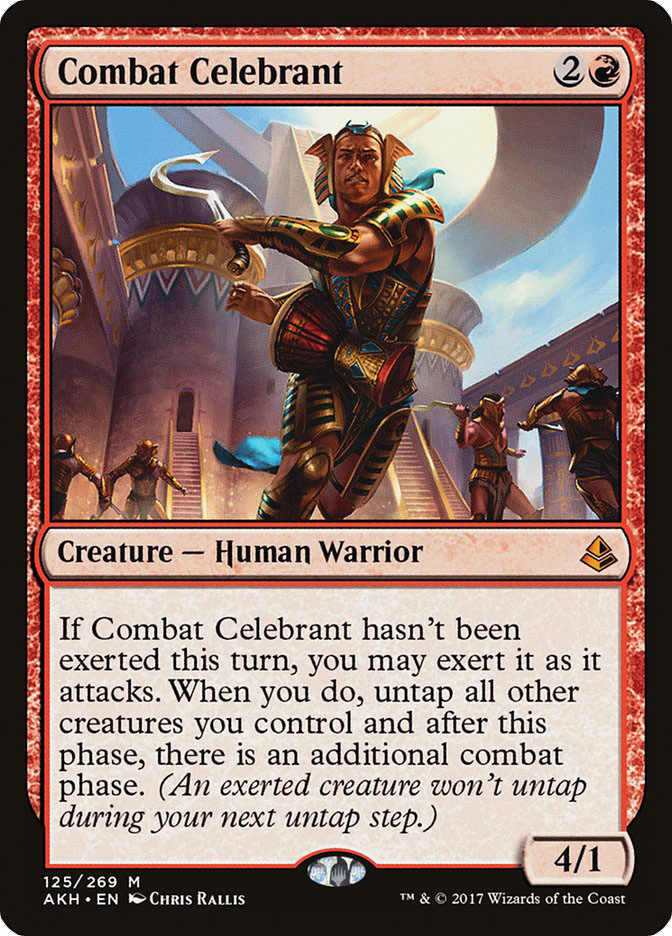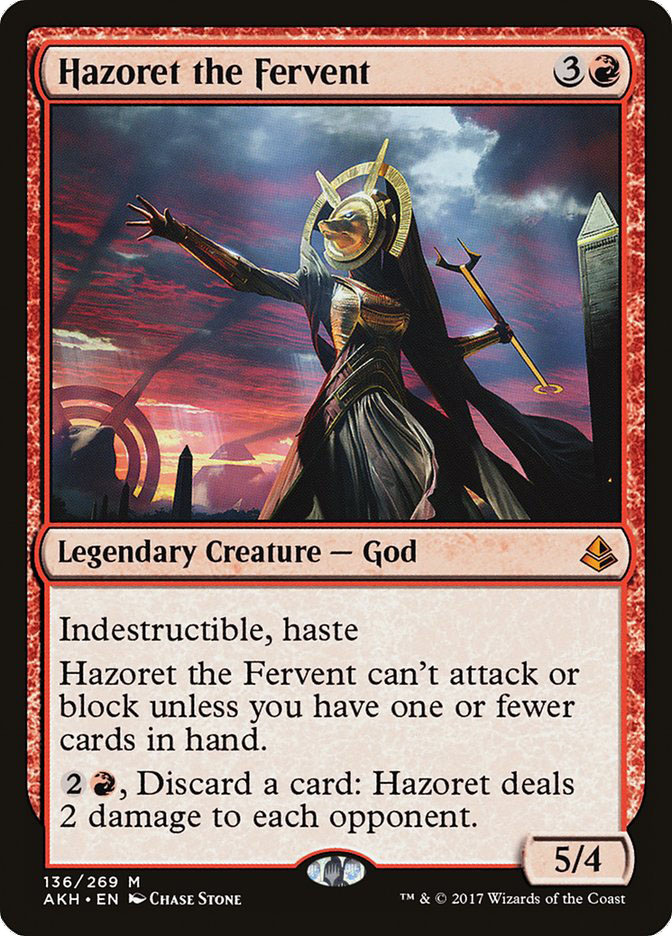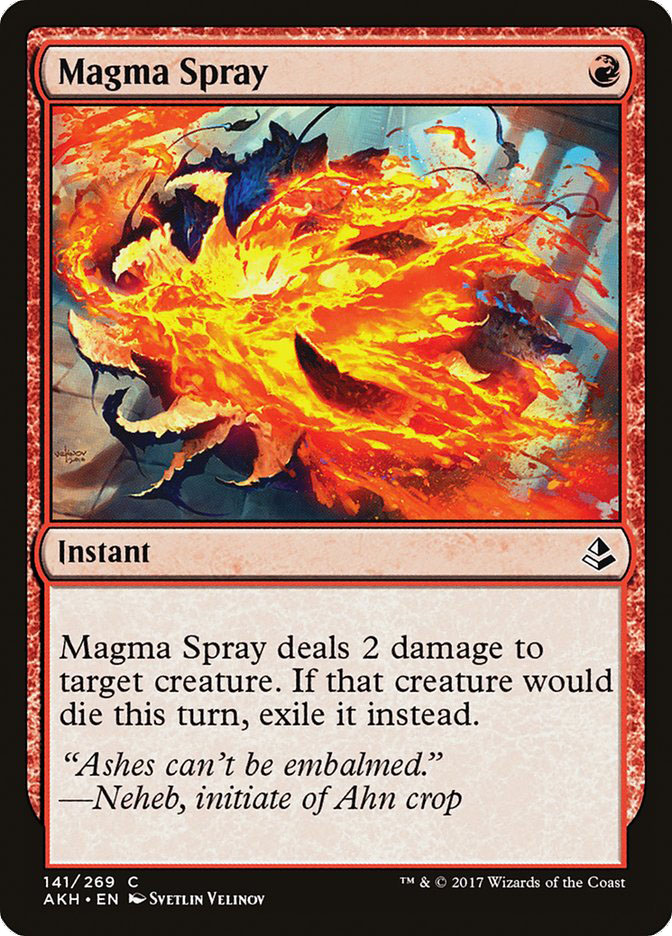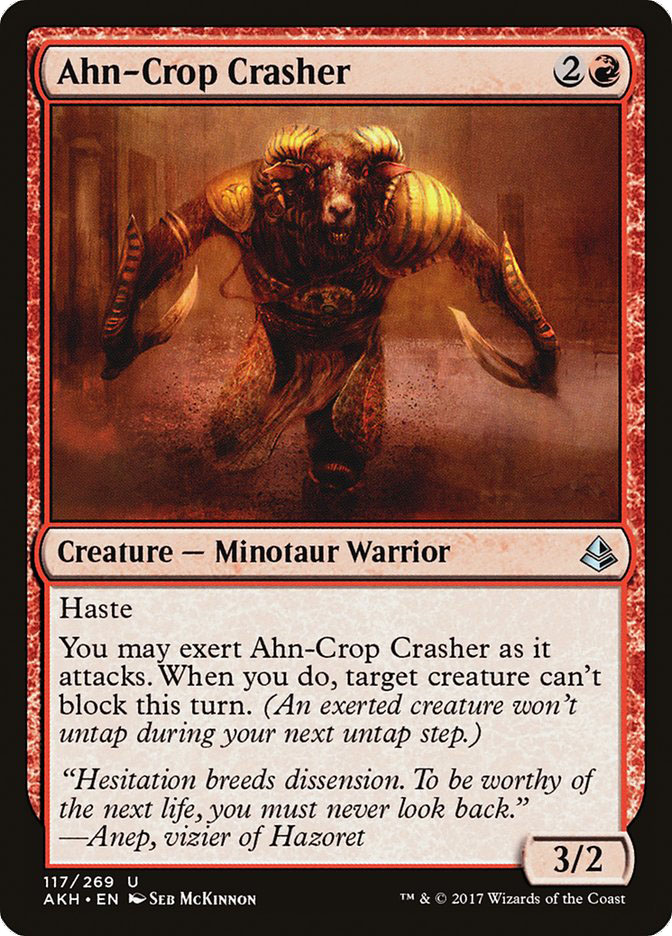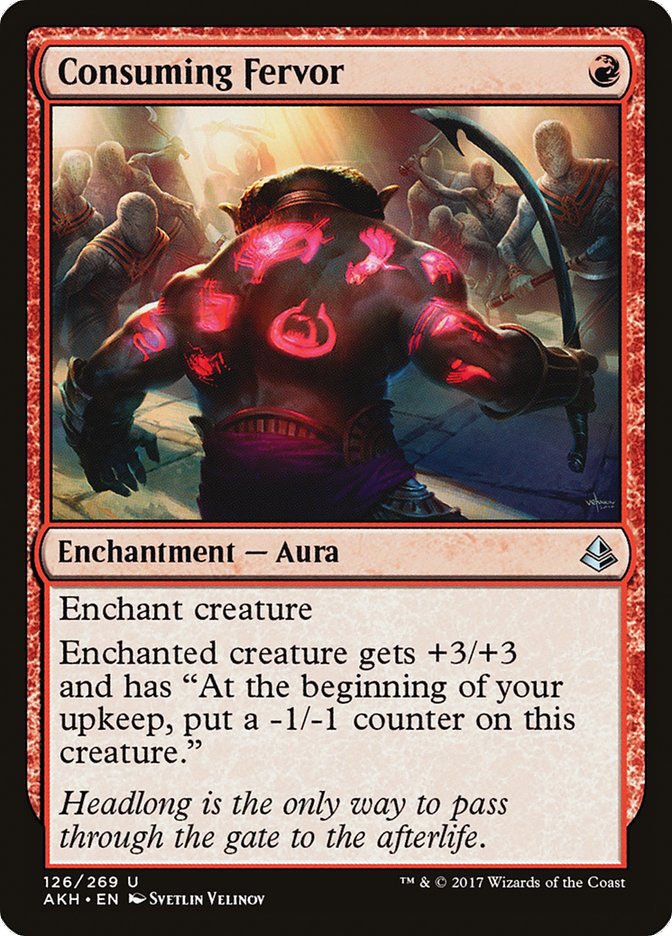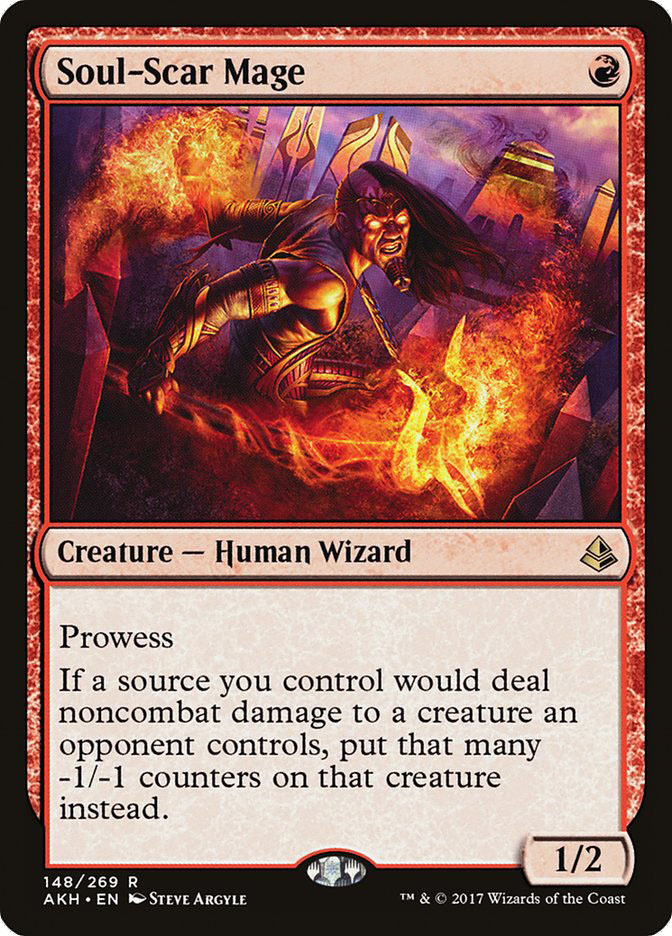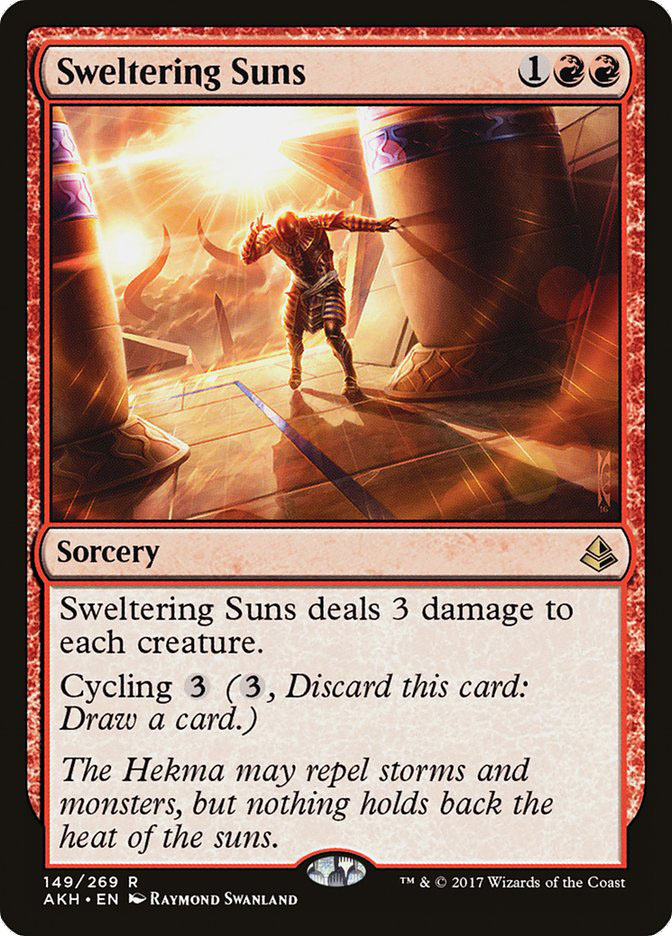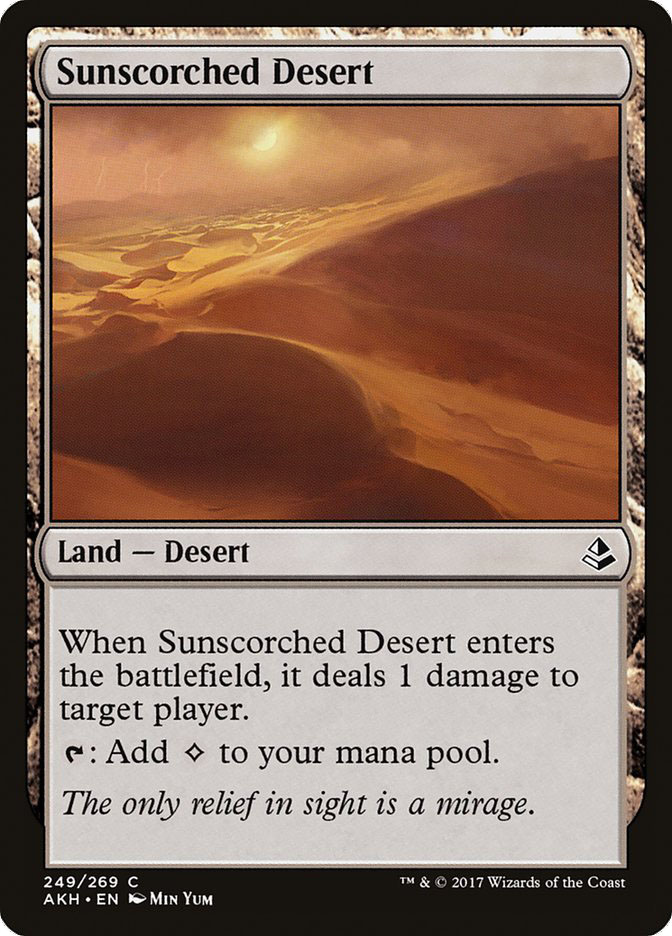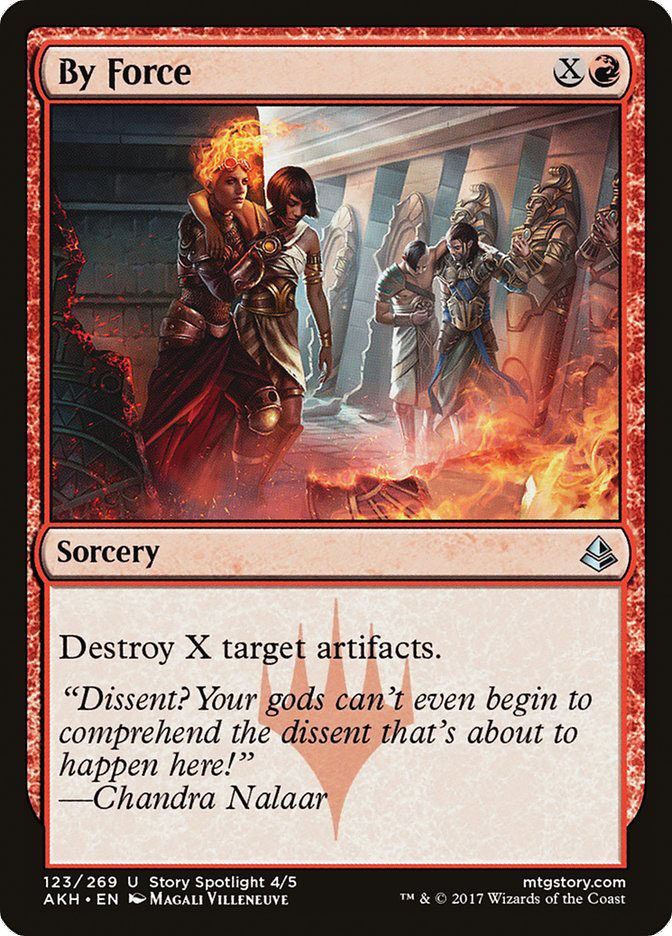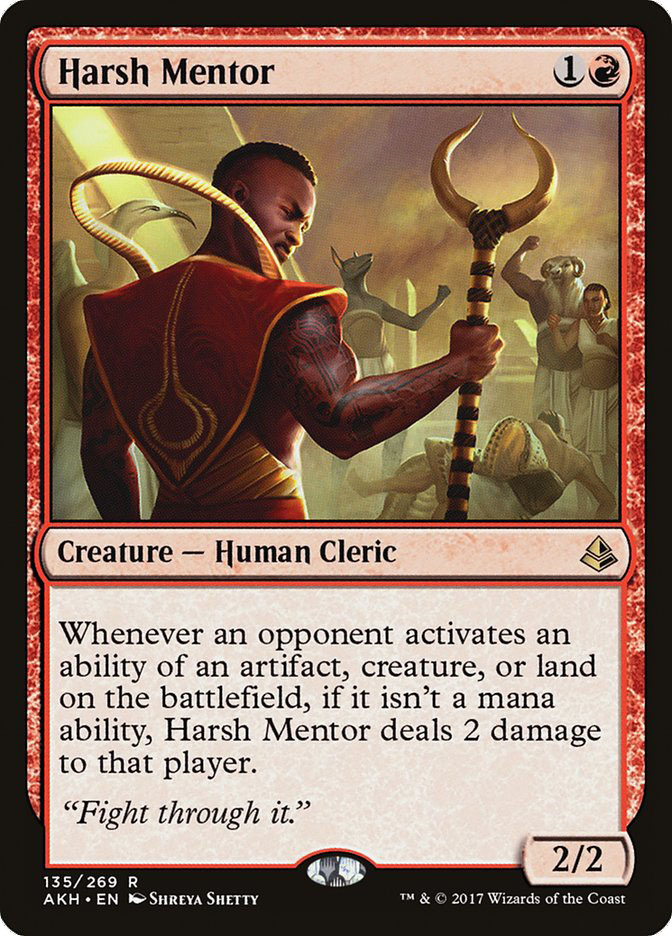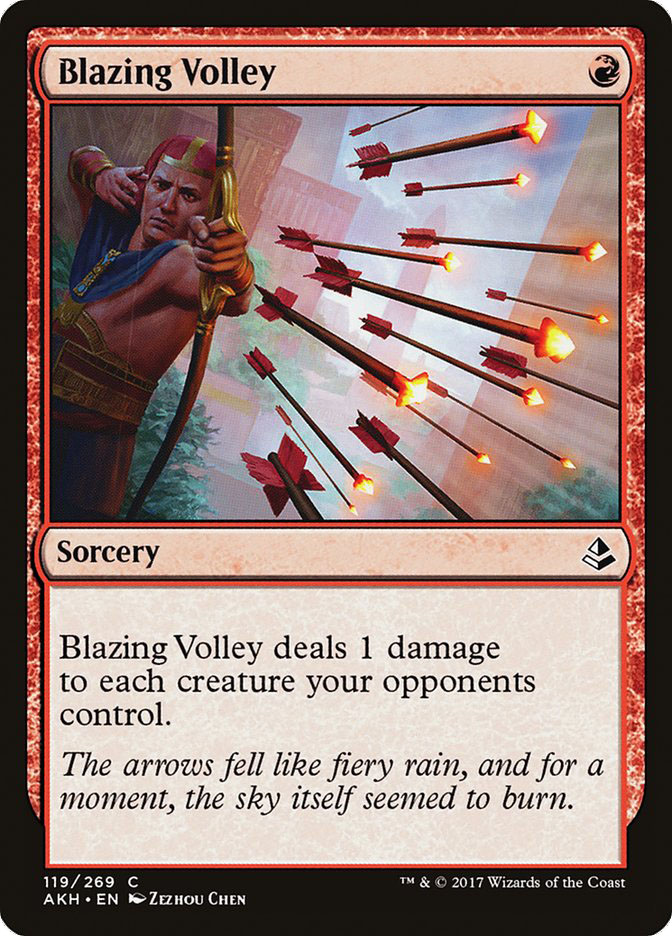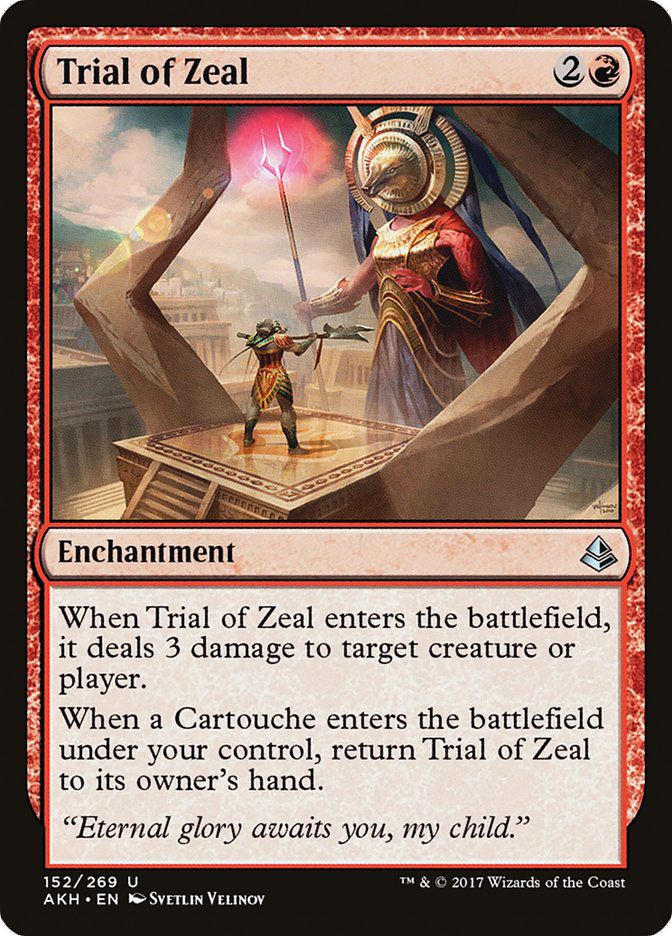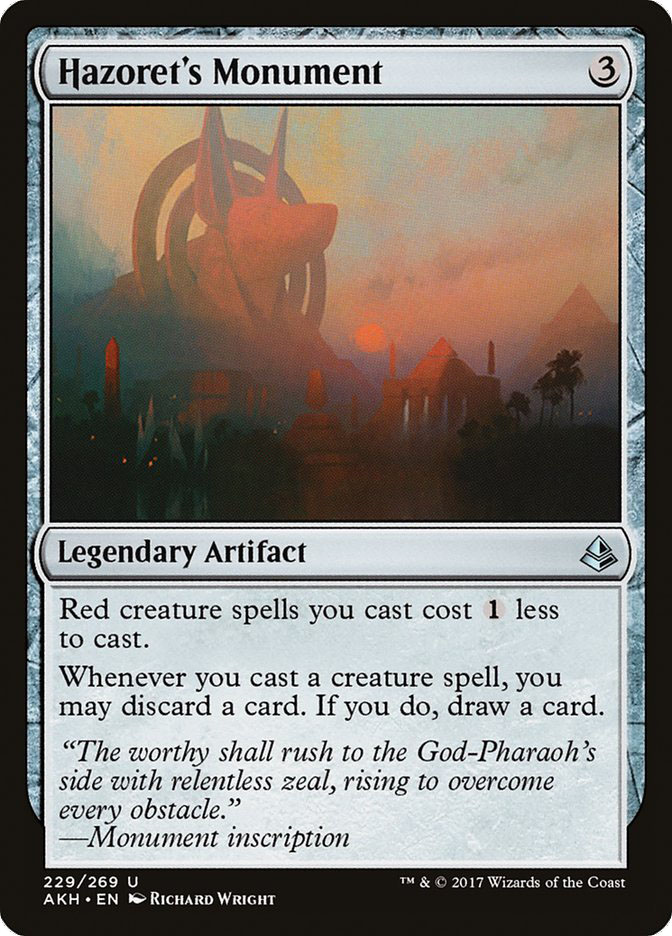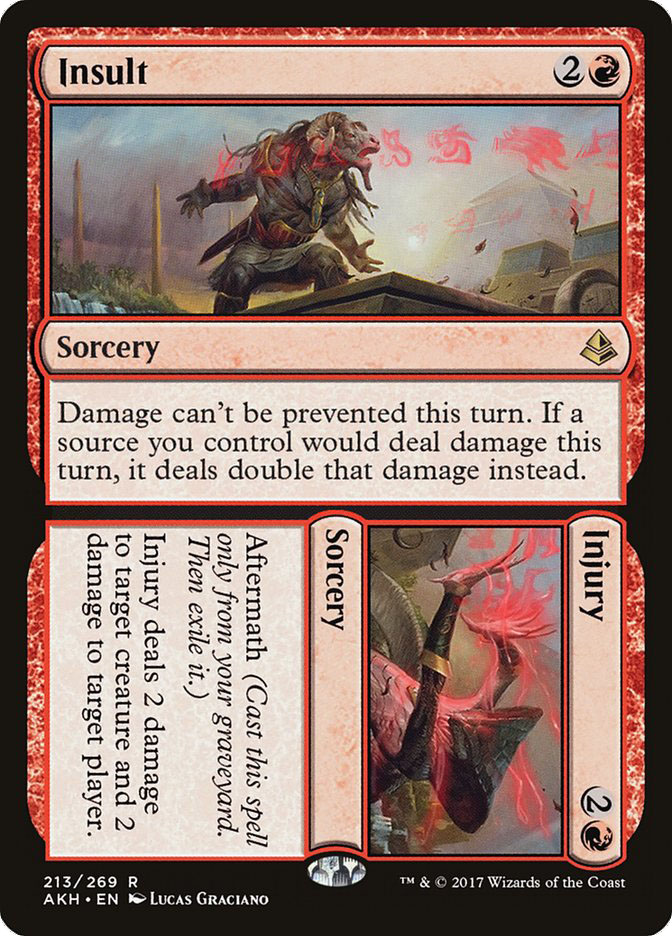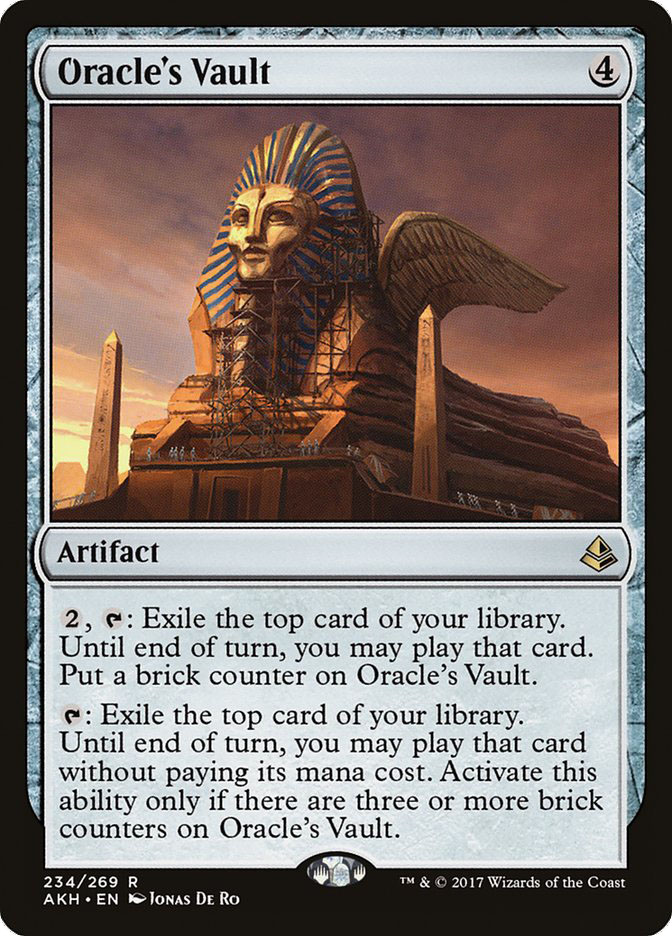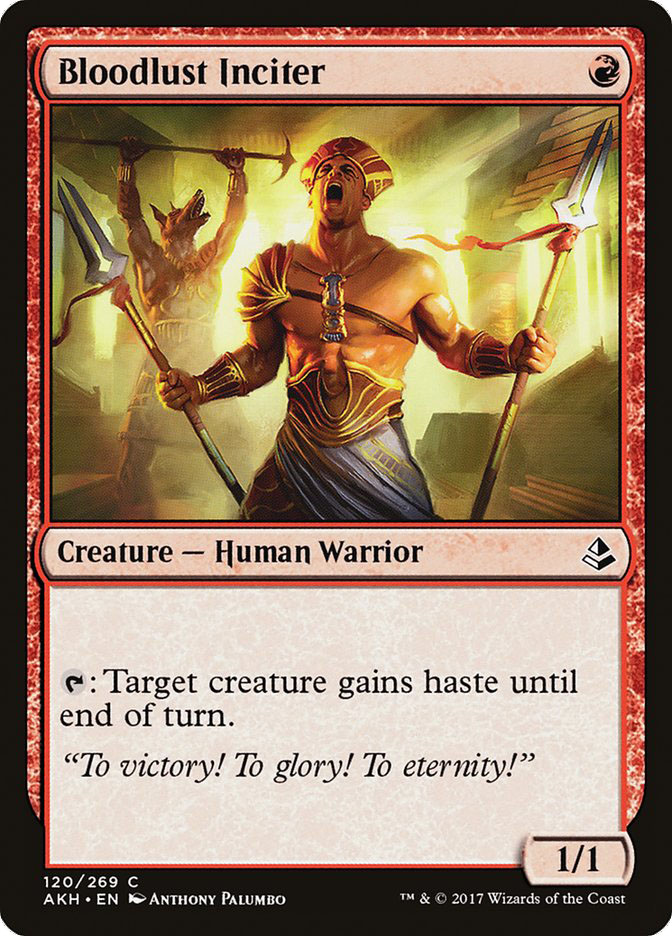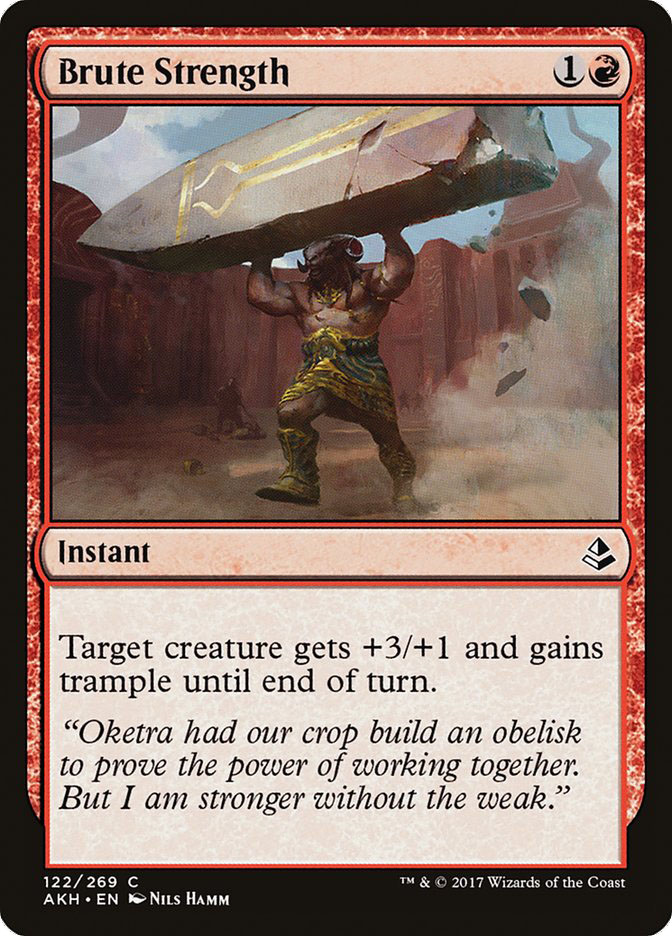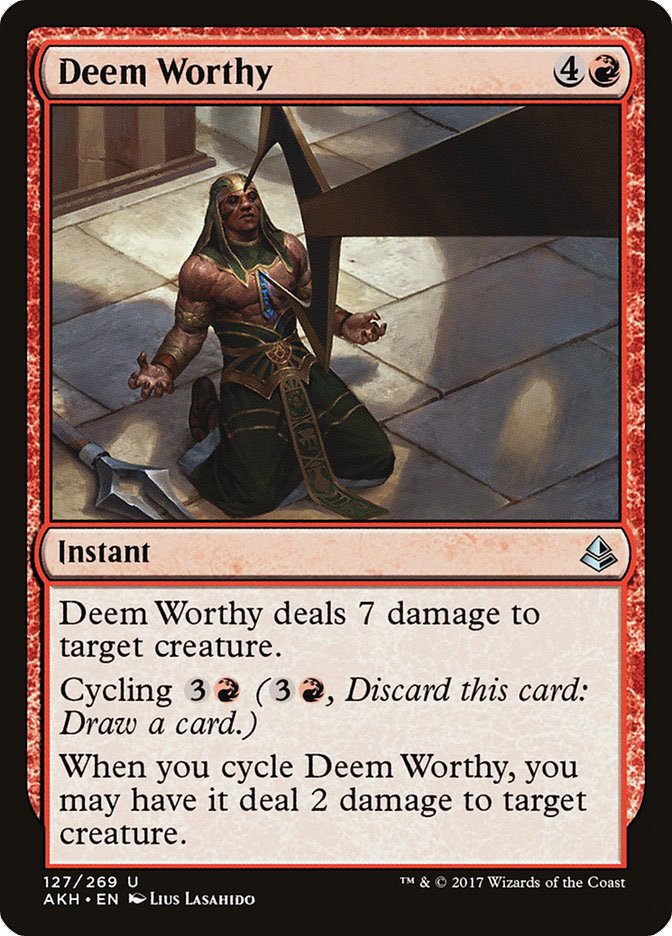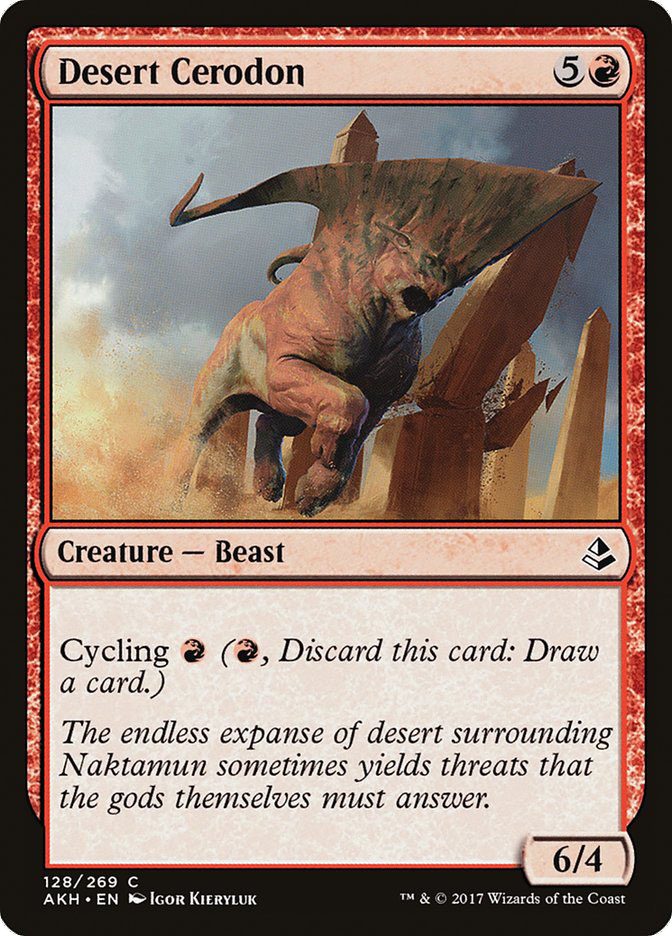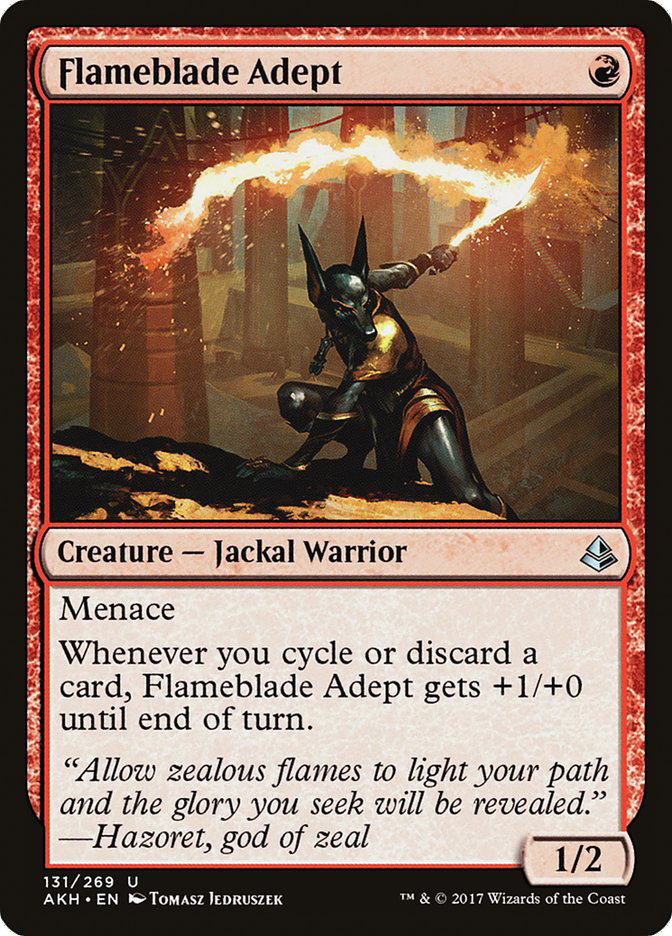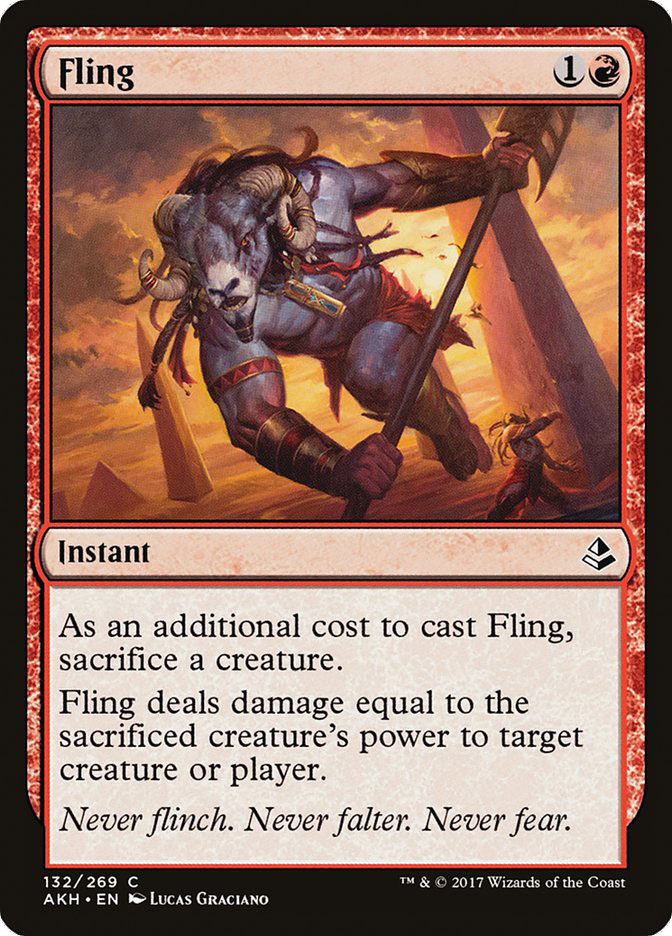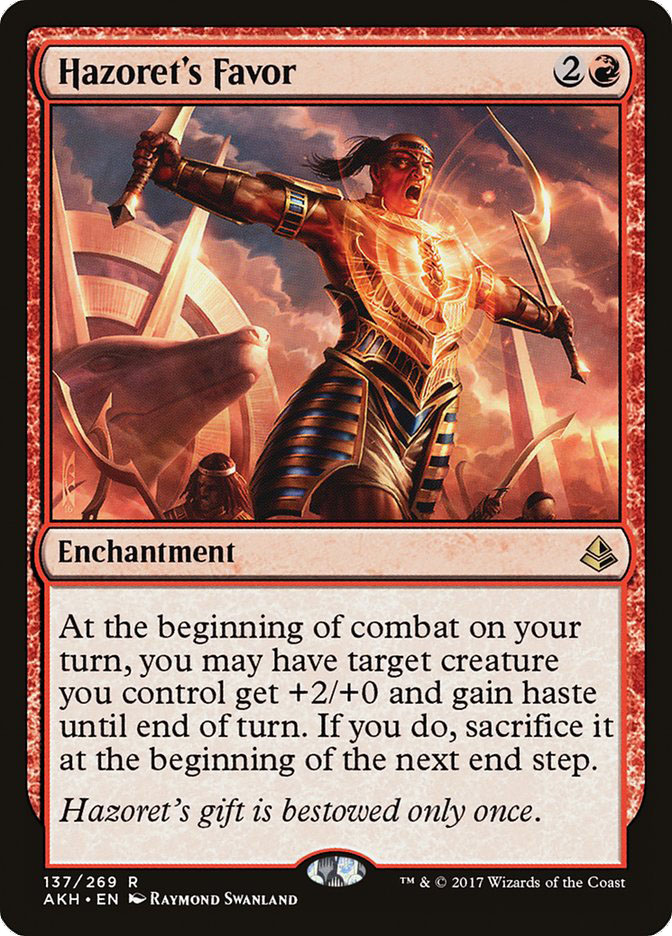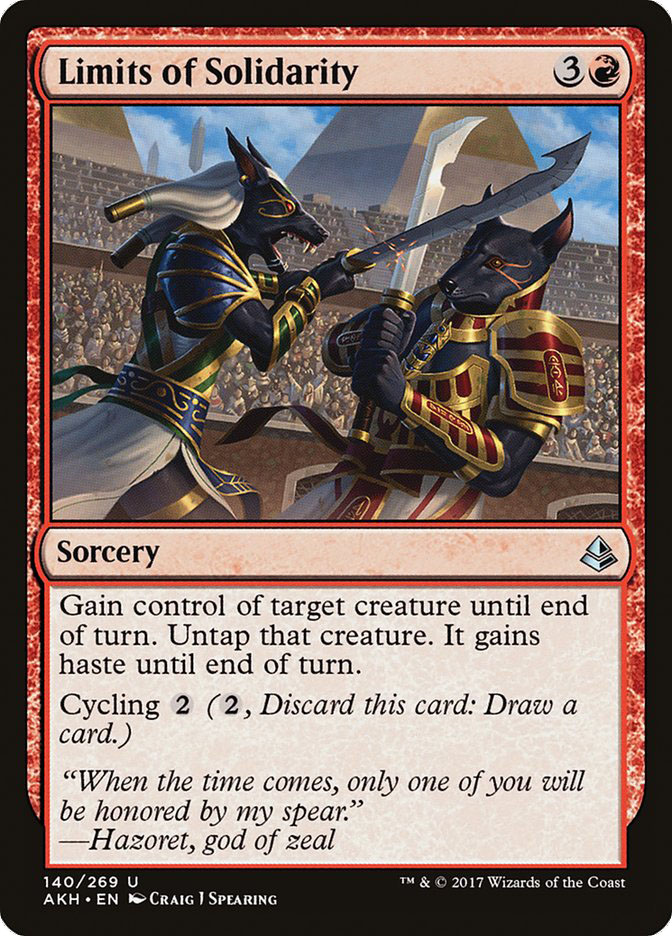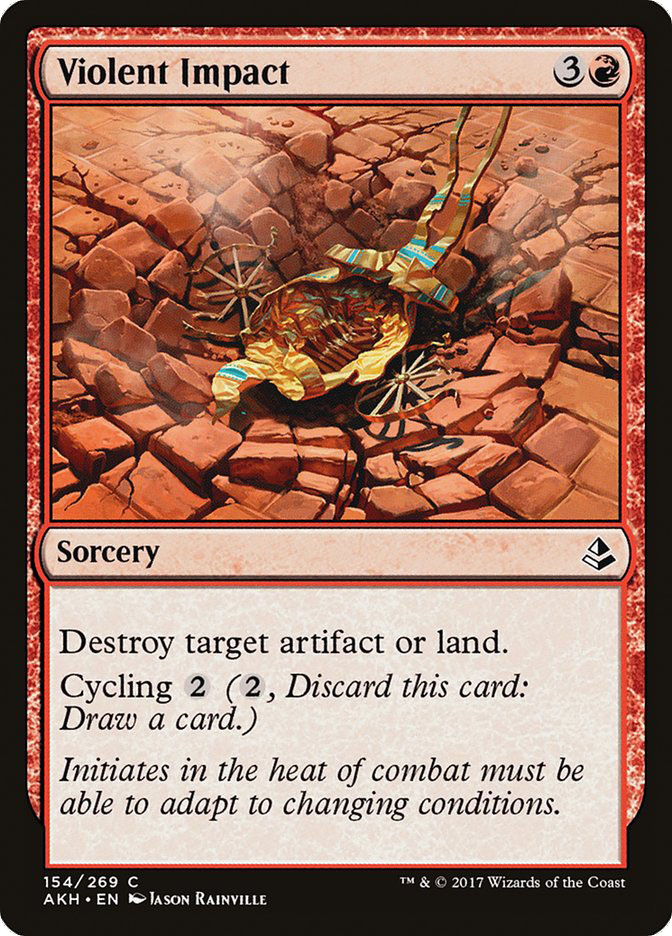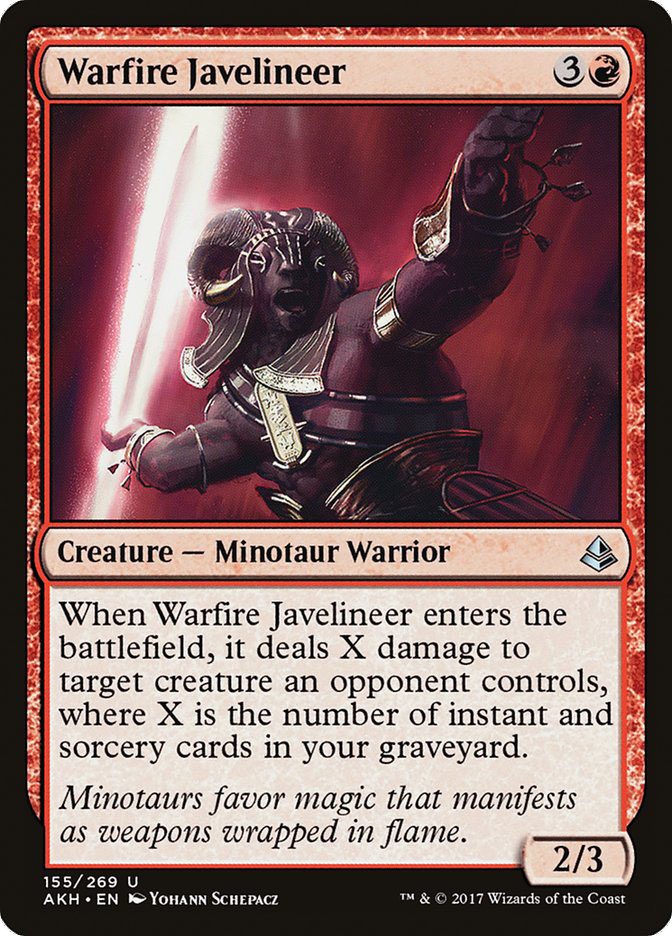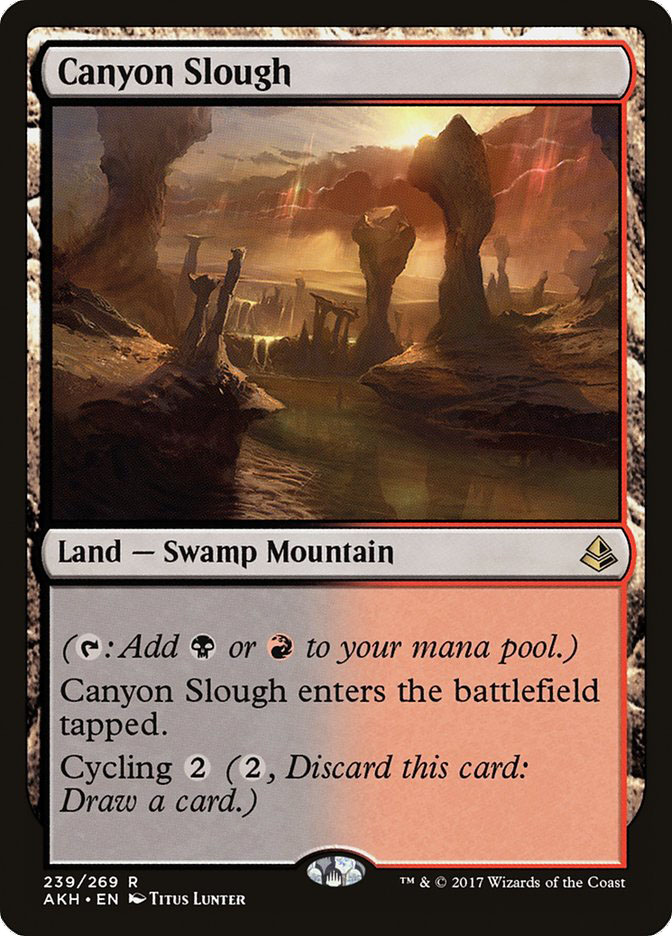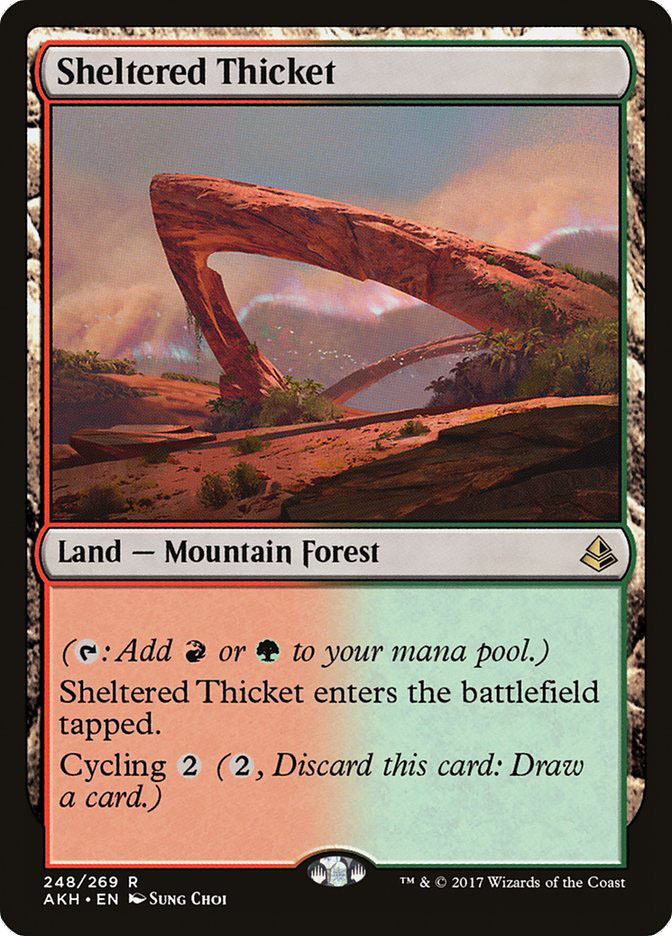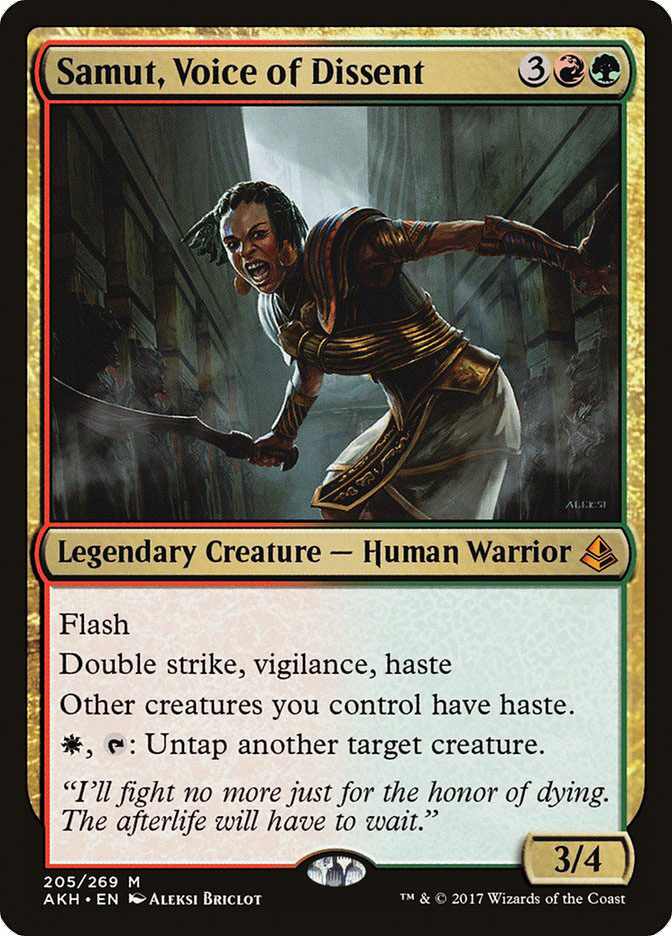Of the five colors in Magic, for me, none shine more brilliantly as a standalone color than mono-red. Red, in its purity, feels like it can accomplish so many different goals because it alone as a color is so directly tied to a fundamental concept in Magic: damage.
I’m not married to that purity. My friend Jen recently told me that her understanding of what red meant came out of watching me play a “Barely Boros” deck to a win in Columbus. That deck ran Boros Charm in the main but still basically felt as red as you can get. Perhaps that was on the strength of its creatures.
I’ve been doing a Red Review for nearly every set since Patrick Sullivan stepped down from doing his Red Box Review back in Theros block. If you’ve read them, you already know my philosophy on the review.
Mission Statement
The goal of every Red Review is to think of a new set from the perspective of decks that are in essence red decks, not simply playing red. This is not a review on what red cards are good in Fevered Burn or G/R Energy Aggro. This is a review about what cards can make a splash in decks that are fundamentally red, even if, like my “Barely Boros” deck, they might do a light splash.
There are a lot of ways to be a “red” deck. It can be a Goblin token swarm, artifact-based Big Red, heavily Burn, classic “Sligh”-style midrange control or aggro, Boss-style Red, and more. If you love red, my Amonkhet Red Review is for you.
Coming out of Aether Revolt, things weren’t to kind to red decks. I noted that the best news for red was this card:
After that, the next two best cards for red I called as these two (in order):
That was it. I’m going to tell you, folks, that’s a pretty poor package of cards, however excellent any of those three are.
Here is the great news: Amonkhet is chock-full of great cards for red. Without further ado, let’s get to it!
The Card to Watch
Sometimes there isn’t a “card to watch” per se – that card that can do something so unusual it demands a special moment to take note of it. Pyromancer’s Goggles from The Magic Origins Red Review was such a card, where it might not pay off now but feels like it could pay off in some future moment.
For Amonkhet, that card is Glorious End.
This is a strange card. Part Time Stop, virtual Final Fortune, this card gives red something it has never really had before: effective and universal countermagic. The cost is a bit steep for a mono-red deck (yes, the new card Gideon of the Trials can save you, but this is the Red Review), but the card still can solve problems nothing else may be able to do.
If you’re going to lose to a combo of some kind and you don’t have the answer, Glorious End can be that answer. Now, you may still lose at the behest of Glorious End’s rough drawback, but you’re no worse off than you would have been otherwise. Dead is dead. Glorious End can give you that chance to finish them off.
Sometimes, you won’t be at all using the card as an answer but as a means to simply end it. If your opponent is in a very weak position and you think you can kill them with another turn, sure, they can get the untap step, but if you kill them as a result of their lost remainder of the turn, that aggressive play is another incredible option. Add to that the ability to chain together Glorious End after Glorious End to forestall your own death for a turn, and you have something pretty special. Final Fortune could never do that.
Historically, Final Fortune effects have usually been a part of broken combos rather than backing up a “fair” plan, so there may end up being no payoff for Glorious End, but in the end, it is certainly a card to watch.
The Excellent
Bloodrage Brawler is an awesome beatdown machine. In the past for red, we’ve used creature enchantments on small critters to get the payoff of a big creature so cheaply. The discard on Bloodrage Brawler lets you turn either your worst card into that enchantment or lets you enable another card that you’d rather discard. That’s pretty powerful stuff.
For a red deck, these discarded cards are most likely going to be madness cards, of which there are plenty of powerful choices. Red isn’t exactly the Embalm color, but that is another thing to be thinking about.
More important, though, is just how cheaply this Minotaur Warrior creates a beatdown. 4/3 for two is rather unprecedented right now, and the discard is not a cost but an effect. If you’re already empty-handed, you still get the 4/3. If you’re looking for a small hand, Bloodrage Brawler is here to help.
This card is going to see a lot of play, despite cards like Fatal Push being around.
An extra combat phase usually doesn’t end up being worth the card. Combat Celebrant is a bit different.
Four power is utterly huge. Yes, nearly any creature can hop in the way and kill Combat Celebrant, but if there isn’t a creature to do that work, the amount of damage being produced is utterly insane. Even if there is a blocker to kill the Combat Celebrant, you’re still going to get the effect you want with the rest of your team. We all know that double-strike can cause a ton of damage, and Combat Celebrant definitely brings the CC to your damage. Even more impressive is that Combat Celebrant can bring your tapped down noncombatants into the combat, a feat that isn’t always the case with these “Relentless Assault” cards.
While this card doesn’t make sense for a lot of red decks, anything going wide is going to want to think about this one.
In the running for the best card in the set, Glorybringer is the kind of card I always want red to have. Flying, hasty damage is a big deal, especially in a world of planeswalkers (I’m looking at you, Gideon, Ally of Zendikar).
Glorybringer is expensive, but still not so expensive that it won’t make sense to have access to at the top of an aggressive red deck’s curve. It is cheap enough for it to be the backbone of a midrange red deck. And it is powerful enough that it will be able to affect any game of Magic that it could theoretically appear in, not just games where it is on the battlefield.
Gideon, Ally of Zendikar is the most important example of games warping from the mere existence of this card. If you fear a potential Glorybringer, what do you do with your Gideon? Do you start out not making a 2/2? The five loyalty can save your Gideon from just a Glorybringer, but it doesn’t take much help for Glorybringer to still take down Gideon in a single swing, especially if you aren’t filling up the battlefield. If you make that more passive play, the power of the Gideon is severely blunted, not to mention when you simply choose to not play it for fear of the Glorybringer.
Still, Glorybringer does have two real enemies: Heart of Kiran and Archangel Avacyn. Both of these cards can make Glorybringer struggle, getting the better of Glorybringer in different ways, mana and survival, respectively. Still, Heart of Kiran isn’t exactly a surprise, and attacking into Archangel Avacyn mana is a choice. Glorybringer and Archangel Avacyn work a neat standoff with each other, with Glorybringer not wanting to attack into a potential Angel and the Angel not wanting to come down early in the face of a Glorybringer (or potential Glorybringer). In this standoff, Glorybringer wins, since being active is better than wasting the mana doing nothing.
I’m excited to have a real Dragon back in the mix. This card is going to be all over the place.
I’ve seen some players I deeply respect disrespect this card pretty intensely.
Frankly, I think it is the scariest of the Gods, and last week called it the most aggressive of the new Gods. Haste is a powerful, powerful ability, and emptying out the hand is a natural thing for any aggressive deck to do.
Grasp of Darkness is going to be the natural enemy of this card, certainly. But far too often, players are going to be in the position where their actual answers to this card are few, and they’ll have to reckon with it as an attacker. There are answers, but “indestructible” is a hell of a keyword for a reason.
Hazoret the Fervent wouldn’t be so frightening if it weren’t for how easy it will be to make a viable attacker and the haste. It seems practically trivial for it to attack, and when it does, it will hit hard. I feel like nearly every cheap, aggressive red deck will be running some number of this card in their 75.
Last set, Shock. This set, I conclude the “Excellent” section with Magma Spray for similar reasons: Magma Spray is just an impressive removal spell for what is out there right now.
The top enemy hit by Magma Spray is the format-defining Scrapheap Scrounger, of course. Beyond that, though, there are a number of other creatures you’d rather not see hit the graveyard, and getting them out of the mix is important. This card’s limitations are real – unlike Shock, you won’t be killing the opponent with Magma Spray – but regardless, especially with the extra graveyard-related cards in the new set, this card is an important addition to red’s arsenal.
The Good
Our new Goblin Heelcutter would maybe only be a sideboard card if it weren’t for the fact that it is very likely going to deal three unblocked damage every time it is cast. Yes, this may mean that you’ve Exerted it, but if you had to, so what? Three damage is the floor, and we haven’t even discussed what happens when this Minotaur has friends.
I mentioned the pseudo-“creature enchantment” nature of Bloodrage Brawler’s natural power and toughness, and this thought largely came out of cards like Giant Strength or Unholy Strength from previous moments in Magic where these kinds of cards played out similarly to hasty creatures. Consuming Fervor, like Unstable Mutation before it, can toss on an extra six damage quite easily and quite early. For red decks seeking a short game, this is a powerful option.
Heart-Piercer Manticore’s enters-the-battlefield ability wouldn’t be so worth mentioning if it didn’t hit players. That fact alone can make the card horribly frightening. Adding Embalm onto the already reasonable body makes this is an all-star. This can reasonably see play in more aggressive or more controlling red decks.
We’ve already learned that prowess works out pretty well on a cheap red creature. From my own experience, I know that adding a “wither”-like aspect to non-combat damage is absolutely relevant. I played Everlasting Torment in the sideboard of many decks, including my “Chevy Red” from PT Hollywood 2008, the top-finishing red deck from that PT. What I wrote then is still true: being able to chop down big creatures, even if you can’t kill them outright, matters. Especially if you do something like chop a creature down and then have it take combat damage, this creates far more bang for your buck, and all attached to a reasonable creature to boot!
Not all red decks are aggro decks. For a controlling red deck or a midrange-control red deck, this card is incredible, and if we’d had a card like this a short while ago, we’d have seen it played very, very often. Even the occasional more aggressive deck might choose to sideboard it in the right metagame.
If you can afford the colorless, this card is an absolutely reasonable option for an aggressive red deck. If you remember how much work that Radiant Fountain did for a control deck, I feel as though Sunscorched Desert does even more work for an aggressive one. It does have competition from cards like Hanweir Battlements, but it is still worth thinking about. This is not a tool for the multicolor decks out there, unless one of those “colors” is colorless.
The Sideboard Cards
Competing with Release the Gremlins is hard work, but By Force does it. Presuming you’re in the market for this kind of answer, it’s an impressive one.
The clearest place this card is frightening is if you are a poor Vehicles deck. Shockingly, when you look at all of the cards seeing play in Standard, Harsh Mentor misses on a great deal of them, but even if it does, a 2/2 for two is still reasonable. This will have a home, but, not like it would in Modern, where it is an utter beating against many manabases.
Sometimes you just need an Icy Manipulator-style card, even an aggressive deck. The fact that it can quickly turn around and even turn off activated abilities makes it even more worthy of consideration. While it struggles as an artifact (there is some truly incredible artifact hate right now), this can be a great answer to huge creatures.
Damage that dodges creature removal is always a boon for aggressive red decks. This kind of does that. You can drop this into play and expect to get some damage in adding to the aggressive creatures you’ve already played, and this will stick around after creature removal. However, it does suffer from the problem that removal itself blunts this card. Hopefully “lose life” and the immediacy of the damage are enough to make up for it.
The Role-Players
If you need to sweep away little opposing creatures, you have the tool.
This is a reasonable rate, and if you’re also using Cartouche of Zeal, you can make a real engine of it.
Perhaps best in a midrange red deck running five-drop critters, this card needs to be able to be real mana acceleration plus useful in cycling through a deck. If that’s your jam, here’s your card.
Sometimes, this upgrade in damage will be what you need. This is not a random card to try to use, but rather a card that is looking to solve something specific.
Perhaps playable in the main in a real red control deck, or from the sideboard for another red deck. If you’re planning on a grind, this card is a powerful tool.
The Marginal
At 1/1, this is a low payoff for the mana; if you have many powerful, non-hasty creatures in the mix, potentially worth considering.
You’re going to need to do real work to make this card worth the two mana, but I could imagine it being possible.
Without Trial of Zeal, I wouldn’t even touch this card; with it, you can get into some real Boss Red territory.
Are there very many huge creatures you’re looking to kill? When they aren’t there, are you happy to do two damage?
Only reasonable if cycling is what you actually want.
A 1/2 menace is absolutely serviceable for an aggressive deck. Adding in discard elements and cycling generally takes time, so it will take something special going on for this to be a real player.
In other color combinations, this may be more reasonable, but in pure red, the means to make this pay off are hard to find.
Losing the creature is a huge cost to this card, so you’d better be doing something awesome with it.
Threaten effects are best if cheap; you’d better gain a benefit from cycling if you’re looking at this card.
An expensive Trumpet Blast feels more reasonable because it can end the game or go away; barely worth considering, but still potentially possible.
A lifetime ago, I played Lay Waste to tie for the Top 8 of a PT in a mono-red deck; it’s a new world, but this still feels like it is on the margins of playable in a controlling deck.
If you’re a burn-heavy Standard deck, this can be another means to get in kill for an otherwise hard-to-kill creature.
The Splashes
Making a red deck able to gently touch into other colors without much pain is a big deal. Especially in big mana decks, the cycling will matter a lot. These two cards are going to greatly increase the ability of a red deck to solve otherwise unsolvable problems.
There are a large number of gold cards with red in them in Amonkhet, but only Samut, Voice of Dissent really feels like it can be the focus of a truly red-centric deck. Most importantly, it doesn’t need to have access to the mana early. Beyond that, though, it can act as a quasi-burn spell, taking out a creature or just smacking the opponent hard. This card feels red, through and through.
The Unimportant
I don’t see much use for these cards, even if I do tend to look at cards with a great deal of open-mindedness. They are all wildly outclassed by other cards (or already exist in the format).
The Conclusion
Amonkhet is a great set for red.
There are so many new options for the color that I will actually be shocked if a base-red deck doesn’t emerge after Standard settles down. I do think that it is pretty likely that we’ll see more of a red deck splashing into black or some other color than we will see a purely mono-red deck, but enough tools have emerged that I can still picture it as a single-color deck.
Most of the decks I’m picturing are essentially in three categories:
Hazoret the Fervent decks will be wildly aggressive and be able to deploy quickly enough that the red God will usually be able to attack the turn you choose to cast it. Not every aggressive deck will have Hazoret, but the theory will be the same for all of them: a very, very short game with some amount of reach to close out the game.
I think there is room for control or midrange control. Sweltering Suns can mop up a lot of the world and does a fair job of controlling a great deal of a typical Saheeli Combo battlefield presence. Control red is always the least likely to appear of any red, but it does crop up from time to time, and cards like Sweltering Suns are why.
Glorybringer just represents the pure power that red can pour out. At home in small numbers atop the curve of an aggro deck, in large numbers in a midrange or control deck, Glorybringer is so powerful, I can imagine it inspiring decks to be red just to play it. I’m currently working on three decks that run four of the card, and I wouldn’t be shocked to discover myself playing it for the next two years in Standard.
I’m more excited for red than I have been in years!
This weekend, as always, I’ll be at Misty Mountain Games in Madison, WI, hoping to open infinite Glorybringers. Good luck in your Prerelease, and may Hazoret show you favor as you burn every opponent you meet!
Get ready for the red revolution!




